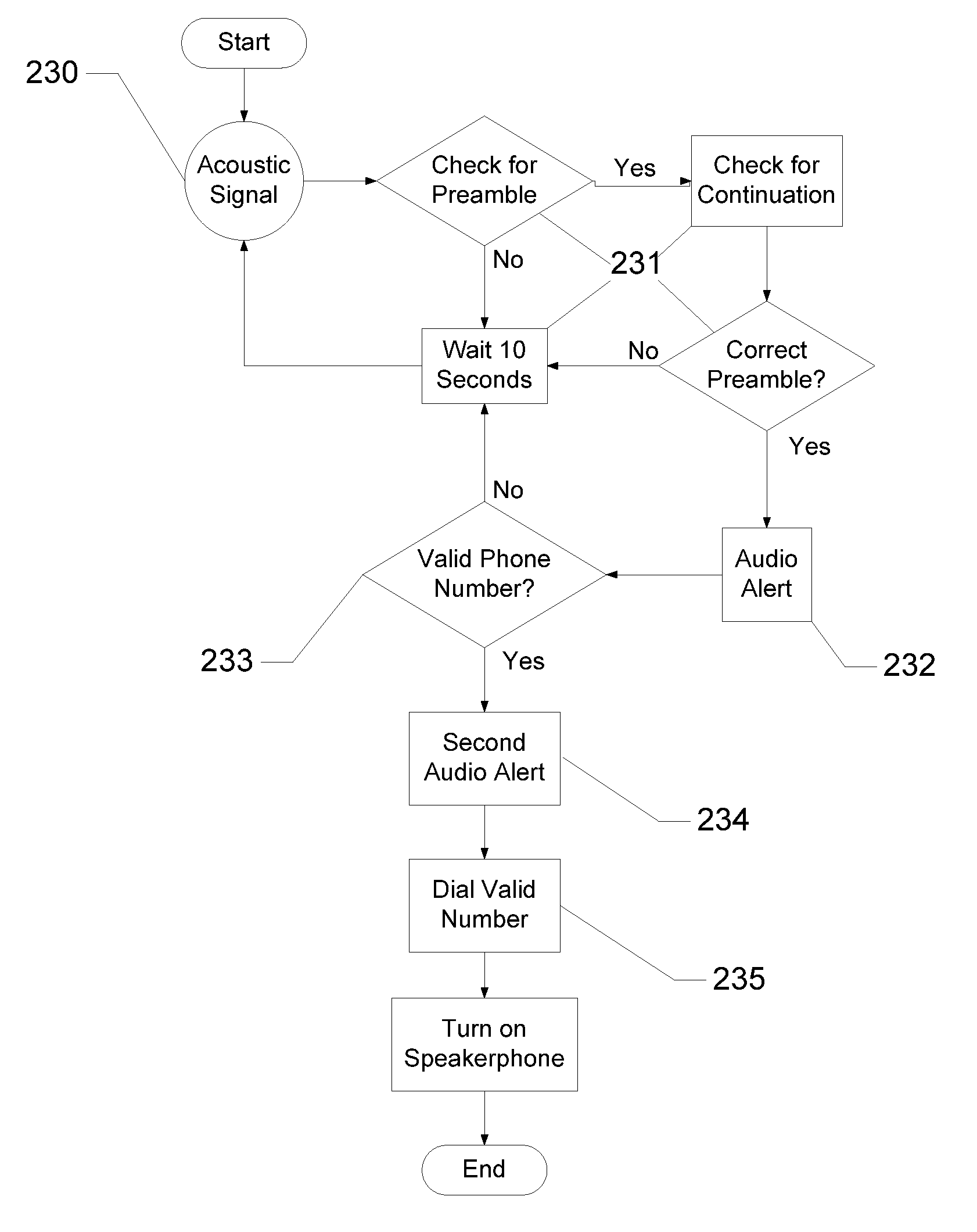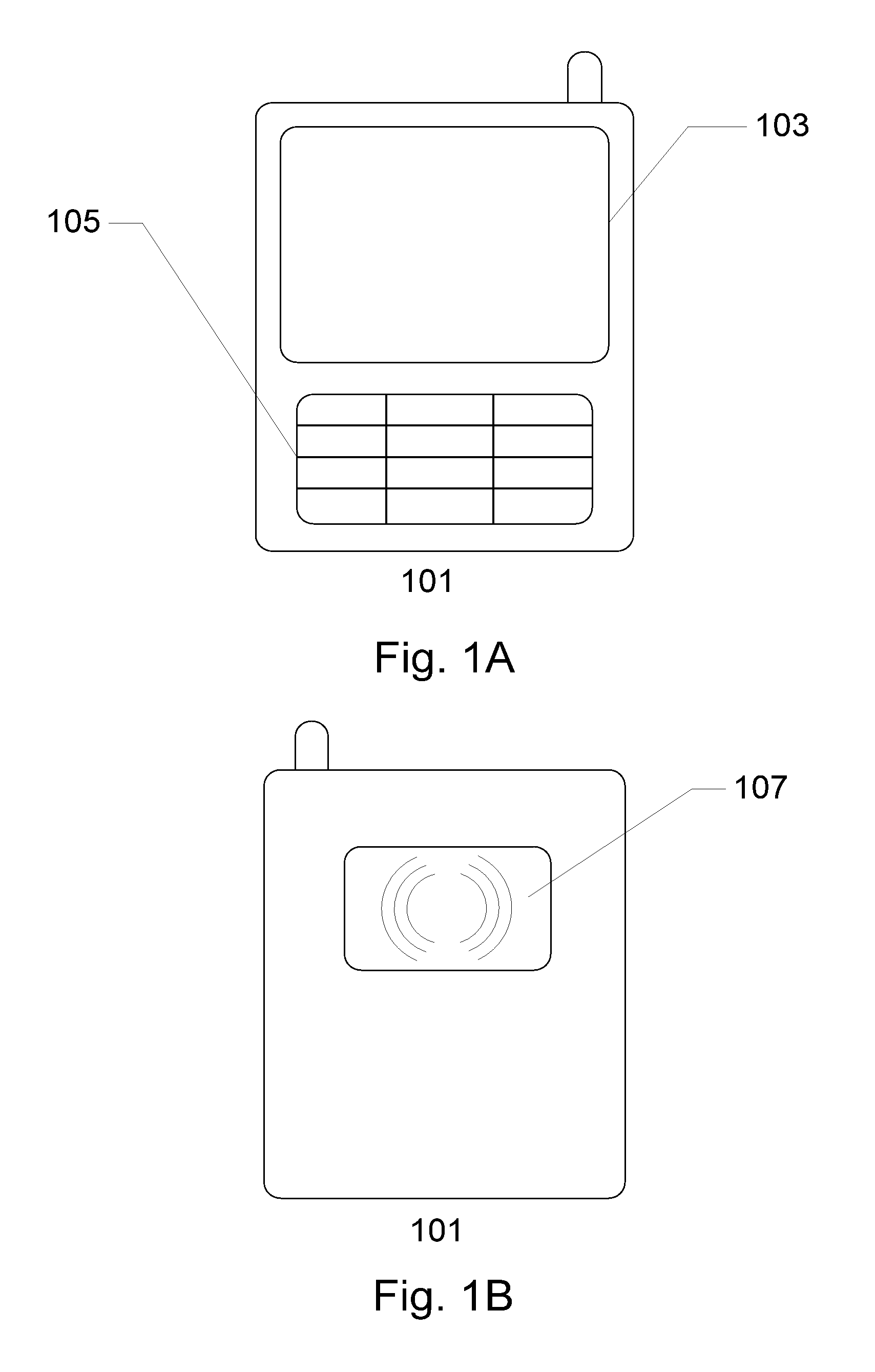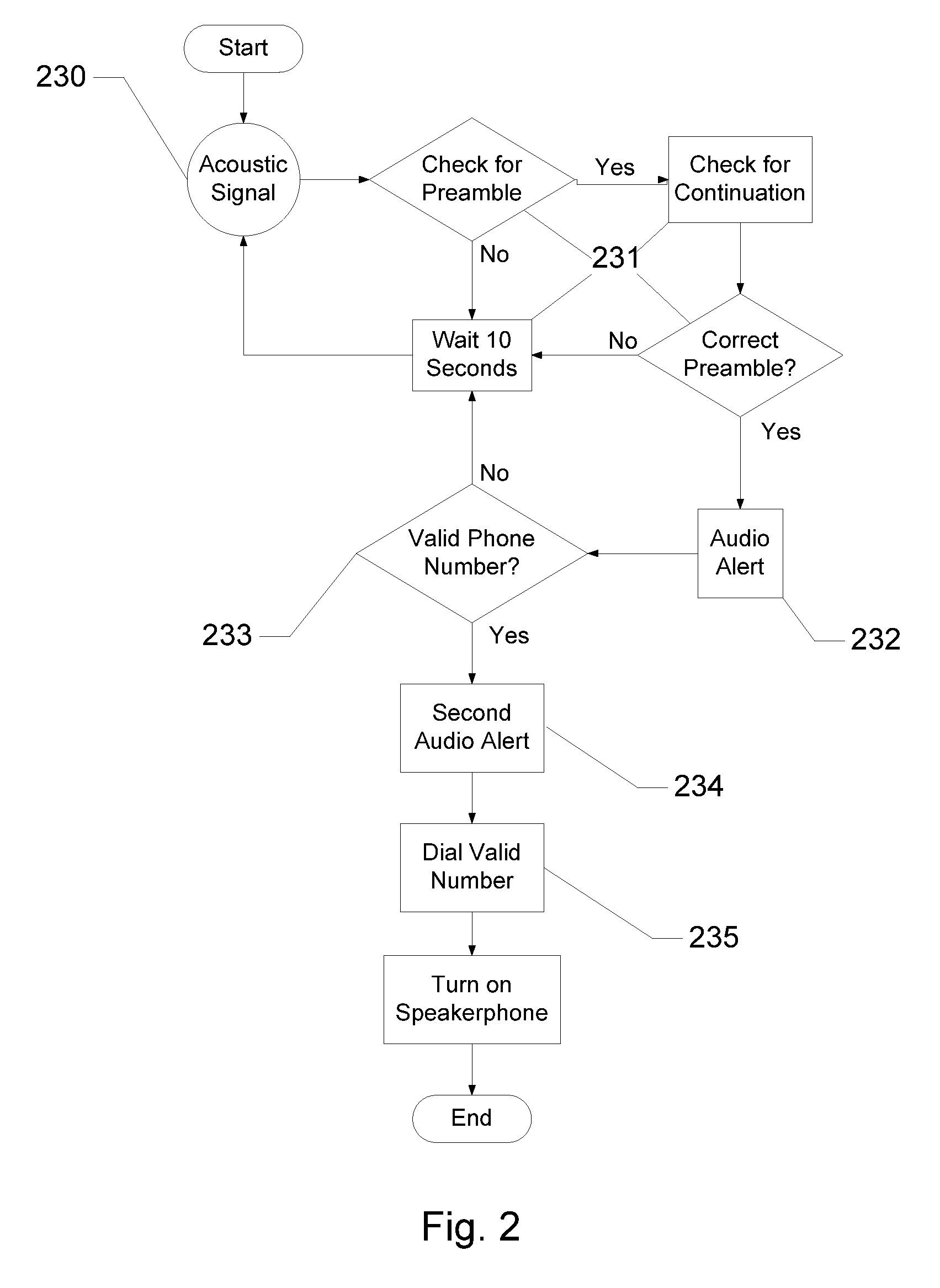Blind Dialing
a technology of blind dialing and dialing frequency, applied in the direction of instruments, substation equipment, electrical equipment, etc., to achieve the effect of simple methods
- Summary
- Abstract
- Description
- Claims
- Application Information
AI Technical Summary
Benefits of technology
Problems solved by technology
Method used
Image
Examples
Embodiment Construction
[0016]Representing an exemplary embodiment, FIG. 1 shows a wireless communications device 101 incorporating the teachings of the present invention. Wireless communications device 101 receives any possible acoustic Morse signals via a microphone 107. In one embodiment, microphone 107 is separate from the microphone the user speaks into during normal conversation. In an alternative embodiment, whenever a call is not in progress, device 101 always checks whether it is being sent any transmissions in Morse code, either via its keypad 105 or acoustically via separate microphone 107. When wireless communications device 101 recognizes a valid phone number it has received in Morse code, device 101 will indicate to the user that it has recognized a valid phone number. This indication could be in the form of an audio “beep” or a visual indicator, or any equivalent mechanism. Device 101 will then automatically dial the number, display the dialed number on a screen 103, and activate the device'...
PUM
 Login to View More
Login to View More Abstract
Description
Claims
Application Information
 Login to View More
Login to View More - R&D
- Intellectual Property
- Life Sciences
- Materials
- Tech Scout
- Unparalleled Data Quality
- Higher Quality Content
- 60% Fewer Hallucinations
Browse by: Latest US Patents, China's latest patents, Technical Efficacy Thesaurus, Application Domain, Technology Topic, Popular Technical Reports.
© 2025 PatSnap. All rights reserved.Legal|Privacy policy|Modern Slavery Act Transparency Statement|Sitemap|About US| Contact US: help@patsnap.com



